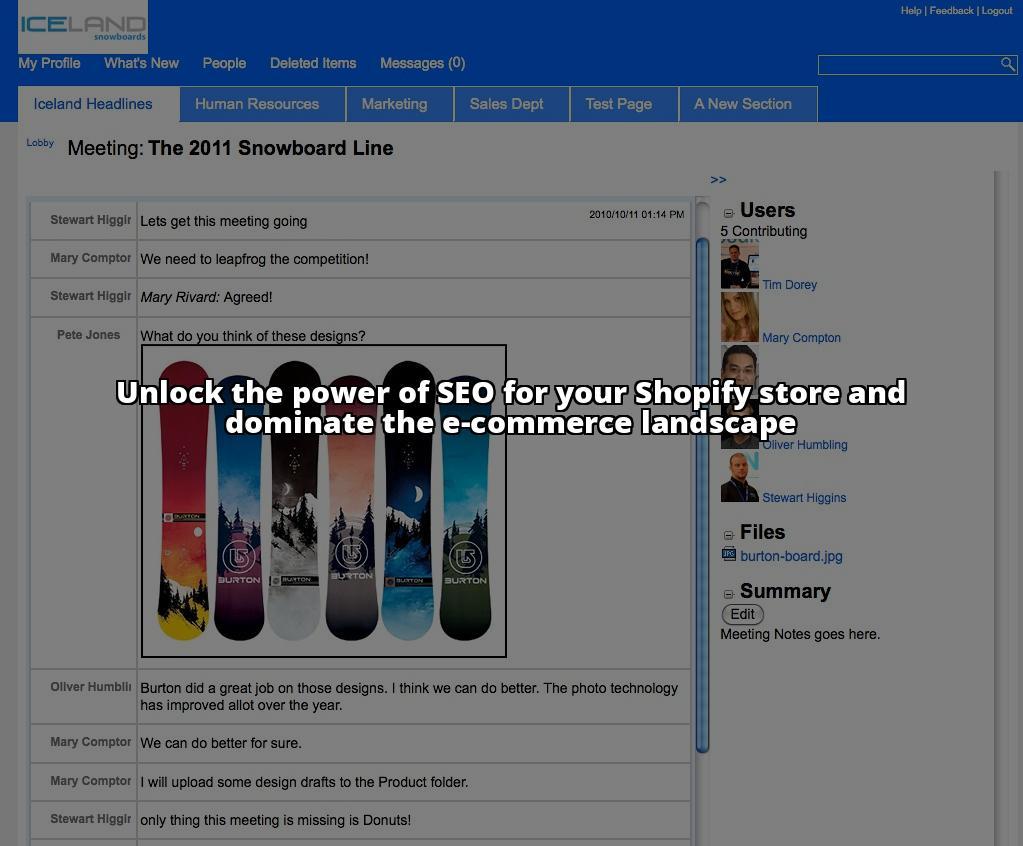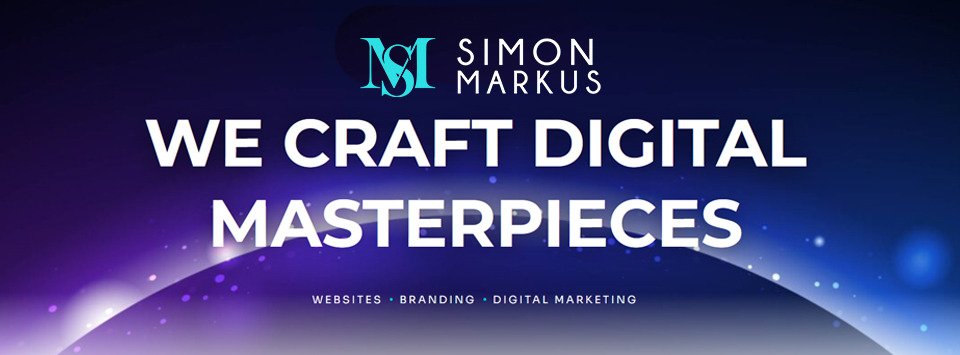In today’s competitive digital landscape, having a strong online presence is crucial for the success of any e-commerce store. One of the most effective ways to increase your store’s visibility and drive organic traffic is through search engine optimization (SEO). And if you’re running your store on the popular Shopify platform, there are specific SEO tactics you can implement to boost your rankings and attract more potential customers. In this article, we’ll explore the ins and outs of SEO for Shopify stores and provide you with actionable strategies to optimize your store’s visibility and increase your conversion rates.
What readers will learn from this article:
- Basics of SEO for Shopify stores and the unique challenges and opportunities that come with using the Shopify platform.
- Importance of keyword research and strategies for finding relevant keywords with high search volume and low competition.
- Techniques for on-page optimization, content creation and optimization, site structure and navigation, mobile optimization, technical SEO, building backlinks, user experience and conversion optimization, tracking and analytics, and ongoing SEO maintenance for Shopify stores.

Understanding SEO for Shopify
SEO, or search engine optimization, is the practice of optimizing your website to rank higher in search engine results pages (SERPs). By optimizing your website for search engines, you increase your chances of being found by potential customers who are actively searching for products or services you offer.
When it comes to Shopify stores, there are unique SEO challenges and opportunities that arise from using this platform. While Shopify provides a user-friendly interface and takes care of many technical SEO aspects, there are still certain optimizations you’ll need to implement to maximize your store’s visibility. From on-page optimization to mobile optimization, we’ll cover all the essential SEO tactics tailored specifically for Shopify stores.

Keyword Research for Shopify Stores
One of the fundamental aspects of SEO is keyword research. Keyword research involves identifying the words and phrases your target audience is using to search for products or services similar to what you offer. By understanding the keywords with high search volume and low competition, you can strategically incorporate them into your website content and improve your chances of ranking higher in search results.
To start your keyword research for your Shopify store, you can use various tools and techniques. One popular tool is Google’s Keyword Planner, which provides valuable insights into search volumes and keyword variations. Additionally, you can use third-party tools like SEMrush or Moz’s Keyword Explorer to uncover more targeted keywords specific to your niche.
When conducting keyword research for your Shopify store, consider both broad and long-tail keywords. Broad keywords, such as “home decor,” may have high search volume but also high competition. Long-tail keywords, on the other hand, are more specific and have lower competition. For example, “handmade bohemian home decor” may have less search volume but a higher chance of driving targeted traffic to your store.

On-Page Optimization for Shopify Stores
Once you have identified relevant keywords for your Shopify store, it’s time to optimize your on-page elements to improve your visibility in search results. On-page optimization involves optimizing various elements on your web pages to align with your target keywords and provide a better user experience.
Start by optimizing your page titles, meta descriptions, headings, URLs, and image alt text. These elements should include your target keywords naturally and provide a concise and accurate description of the content on each page. Shopify’s built-in SEO features and plugins make it easy to customize these elements for each page on your store.
When optimizing your content, strategically place your target keywords throughout the text. However, avoid keyword stuffing, as it can negatively impact the user experience and your search engine rankings. Instead, focus on creating high-quality, valuable content that naturally incorporates your keywords in a meaningful way.

Content Creation and Optimization for Shopify Stores
In addition to optimizing your on-page elements, creating unique and valuable content is crucial for the success of your Shopify store’s SEO. Content can take various forms, including product descriptions, blog posts, and category pages. By providing informative and engaging content, you not only improve your search engine rankings but also enhance the user experience on your store.
When creating content for your Shopify store, consider the keywords you’ve identified during your keyword research. Incorporate these keywords naturally into your content, ensuring that it flows smoothly and provides value to your audience. Avoid keyword stuffing or sacrificing the quality of your content for the sake of optimization.
High-quality, engaging content not only helps your store rank higher in search results but also encourages visitors to stay longer on your site and increases the chances of converting them into customers. With Shopify’s easy-to-use content management system, you have full control over creating and optimizing your store’s content for maximum impact.
| Section | Key Points |
|---|---|
| Content Creation and Optimization | – Create unique and valuable content for your Shopify store. |
| – Incorporate relevant keywords naturally into your content. | |
| – Avoid keyword stuffing and focus on high-quality content. | |
| Site Structure and Navigation | – Optimize your navigation menu with descriptive and keyword-rich anchor text. |
| – Implement a breadcrumb navigation system for easy navigation. | |
| – Use concise, descriptive, and keyword-rich URLs. | |
| – Utilize internal linking to connect relevant pages. | |
| – Ensure your store is mobile-friendly and visually appealing on smartphones and tablets. | |
| – Optimize your store’s loading speed for mobile devices. | |
| – Make sure your mobile navigation is intuitive and user-friendly. |
Site Structure and Navigation for Shopify Stores
A well-organized site structure and user-friendly navigation are essential for both SEO and user experience. A clear and intuitive navigation menu helps visitors find what they’re looking for quickly, while also allowing search engines to crawl and index your pages more effectively.
Optimize your navigation menus by using descriptive and keyword-rich anchor text for your links. This helps search engines understand the content of the linked pages and improves your chances of ranking higher for relevant keywords. Additionally, consider implementing a breadcrumb navigation system to provide users with a clear path to navigate your store.
URL structure is another important aspect of site structure optimization. Ensure your URLs are concise, descriptive, and include relevant keywords. Shopify automatically generates SEO-friendly URLs, but you can further optimize them by customizing the URL structure for blog posts, collections, or product pages.
Internal linking is another powerful strategy for improving your site structure and SEO. Link relevant pages together using anchor text that includes your target keywords. Internal linking not only helps search engines discover and index your pages but also helps users navigate through your store and find related content easily.

Mobile Optimization for Shopify Stores
With the increasing use of mobile devices, optimizing your Shopify store for mobile users is more important than ever. Mobile optimization ensures that your store is fully functional, easy to navigate, and visually appealing on smartphones and tablets. Additionally, mobile optimization is a ranking factor in Google’s mobile-first indexing.
Shopify offers mobile-friendly themes and templates that automatically adjust to different screen sizes. However, it’s still important to review and test your store’s mobile responsiveness. Make sure that your store loads quickly on mobile devices and that all elements are easily accessible and readable.
Another aspect of mobile optimization is ensuring fast loading times. Mobile users are often on the go and have limited patience for slow-loading websites. Optimize your images, minimize code, and leverage browser caching to improve your store’s loading speed.
Lastly, make sure your mobile navigation is intuitive and user-friendly. Mobile users should be able to navigate through your store effortlessly, find what they’re looking for, and complete their purchases without any obstacles.
Technical SEO for Shopify Stores
Technical SEO involves optimizing the technical aspects of your website to improve its visibility in search results. While Shopify takes care of many technical SEO elements, there are still additional optimizations you can implement to further enhance your store’s performance.
Start by ensuring that your store’s loading speed is optimized. A fast-loading website not only improves the user experience but also has a positive impact on your search engine rankings. Compress images, minimize code, and leverage caching to reduce your store’s loading times.
Crawlability is another important aspect of technical SEO. Make sure search engines can easily crawl and index your store’s pages. Use Shopify’s built-in XML sitemap feature to generate a sitemap and submit it to search engines for better discoverability.
Implementing schema markup is another effective technique for improving your store’s visibility in search results. Schema markup allows you to provide additional information about your products and services to search engines. This can enhance your search engine listings with rich snippets, such as star ratings, reviews, and pricing information.
Lastly, utilize Shopify apps and plugins to further optimize the technical SEO aspects of your store. There are various apps available that can help you with tasks like canonical tags, structured data implementation, and redirects. Explore the Shopify app store to find the best tools for your specific needs.
Building Backlinks for Shopify Stores
Building high-quality backlinks to your Shopify store is essential for increasing your website’s authority and visibility in search results. Backlinks are links from other websites that point to your store, indicating to search engines that your content is valuable and trustworthy.
There are several strategies you can employ to acquire backlinks for your Shopify store. One effective strategy is guest blogging. Reach out to relevant blogs or websites in your industry and offer to write high-quality content in exchange for a link back to your store. Guest blogging not only helps you build backlinks but also allows you to establish yourself as an authority in your niche.
Influencer collaborations are another powerful way to acquire backlinks and increase your store’s visibility. Identify influencers or bloggers in your industry and collaborate with them by offering free products in exchange for a review or mention on their platform. This can generate valuable backlinks and drive targeted traffic to your Shopify store.
Additionally, consider submitting your store to industry directories and leveraging Shopify’s partner network. Industry directories often allow you to include a link back to your store, which can improve your website’s visibility and authority. Shopify’s partner network also provides opportunities for backlinks and collaborations with other businesses within the Shopify ecosystem.
User Experience and Conversion Optimization for Shopify Stores
Positive user experience is not only important for attracting and retaining customers but also plays a significant role in SEO and conversion rates. A seamless and enjoyable user experience encourages visitors to spend more time on your site, explore your products, and ultimately make a purchase.
Optimize your store’s page load times to ensure quick and smooth navigation. Slow-loading pages can lead to high bounce rates and negatively impact your search engine rankings. Compress images, minimize code, and leverage caching to improve your store’s loading speed.
Clear and compelling calls-to-action (CTAs) are essential for guiding visitors through the conversion process. Use persuasive language and visually appealing buttons to prompt users to take action, whether it’s adding a product to the cart, signing up for a newsletter, or making a purchase. Place CTAs strategically throughout your store to maximize their visibility and impact.
The checkout process is a critical stage where many potential customers abandon their carts. Streamline your checkout process by minimizing the number of steps and eliminating unnecessary form fields. Offer guest checkout options and provide multiple payment methods to cater to different customer preferences.
Reducing bounce rates is another important aspect of user experience optimization. Bounce rates refer to the percentage of visitors who leave your site after viewing only a single page. High bounce rates can signal to search engines that your site doesn’t provide valuable content or a good user experience. Improve your bounce rates by creating engaging and informative content, optimizing your page layout, and ensuring your store is visually appealing.
Tracking and Analytics for Shopify Stores
To measure the success of your SEO efforts and make data-driven decisions, it’s important to set up tracking and analytics for your Shopify store. By monitoring key metrics, such as organic traffic, keyword rankings, and conversion rates, you can identify areas for improvement and optimize your store accordingly.
Start by setting up Google Analytics for your Shopify store. Google Analytics provides valuable insights into your website’s performance, including the number of visitors, their behavior on your site, and your conversion rates. You can also set up goals and track specific actions, such as completing a purchase or signing up for a newsletter.
Shopify also offers its analytics tools, including the Shopify Reports dashboard. This dashboard provides an overview of your store’s sales, conversion rates, and customer behavior. Use these analytics tools in combination with Google Analytics to gain a comprehensive understanding of your store’s performance.
Regularly monitor your organic traffic, keyword rankings, and conversion rates to gauge the effectiveness of your SEO efforts. Identify trends and patterns, and make data-driven decisions to continuously optimize your store for better results.
Case Study: How Sarah Boosted her Shopify Store’s Visibility with SEO Tactics
Sarah is a small business owner who recently launched an e-commerce store on the Shopify platform. She was excited about her new venture, but quickly realized that getting her products in front of potential customers was a challenge. Sarah knew she needed to improve her store’s visibility on search engines, so she decided to implement some SEO tactics.
Understanding SEO for Shopify
Sarah started by educating herself on the basics of SEO and how it applied specifically to Shopify stores. She learned about the unique challenges and opportunities that came with using the Shopify platform, such as optimizing page titles, meta descriptions, headings, URLs, and image alt text.
Keyword Research for Shopify Stores
Next, Sarah conducted thorough keyword research to identify relevant keywords for her store. She used tools and techniques to find keywords with high search volume and low competition. By strategically incorporating these keywords into her content, Sarah was able to improve her store’s visibility in search results.
On-Page Optimization for Shopify Stores
Sarah optimized her store’s on-page elements, such as page titles, meta descriptions, headings, URLs, and image alt text. She placed keywords strategically throughout her content and utilized Shopify’s built-in SEO features and plugins to further optimize her store’s visibility.
Content Creation and Optimization for Shopify Stores
Understanding the importance of high-quality, engaging content, Sarah focused on creating unique product descriptions, blog posts, and category pages. She optimized her content by incorporating relevant keywords naturally, which not only improved her store‘s SEO but also enhanced the overall user experience.
Site Structure and Navigation for Shopify Stores
Sarah realized the benefits of a well-organized site structure and user-friendly navigation. She optimized her navigation menus, URL structures, and internal linking strategies to improve user experience and search engine crawlability. This made it easier for both customers and search engines to navigate her store.
Mobile Optimization for Shopify Stores
Recognizing the growing importance of mobile optimization, Sarah ensured that her store was responsive, had fast loading times, and offered easy navigation for mobile users. She took advantage of Shopify’s mobile-friendly themes and optimization techniques to provide a seamless experience for her mobile customers.
Technical SEO for Shopify Stores
Sarah paid attention to the technical aspects of her store’s SEO. She optimized website speed, crawlability, XML sitemaps, and schema markup. By utilizing Shopify apps and plugins, she was able to improve the technical SEO aspects of her store, resulting in better search engine visibility and user experience.
Building Backlinks for Shopify Stores
To increase her store’s authority and visibility, Sarah focused on building high-quality backlinks. She engaged in guest blogging and collaborated with influencers in her industry. She also utilized industry directories and Shopify’s partner network to find more backlink opportunities.
User Experience and Conversion Optimization for Shopify Stores
Sarah understood that positive user experience was crucial for both SEO and conversion rates. She optimized her store’s page load times, calls-to-action, and checkout process to provide a seamless and engaging experience for her customers. By reducing bounce rates and increasing customer engagement, Sarah was able to improve both her SEO and conversion rates.
Tracking and Analytics for Shopify Stores
Sarah set up Google Analytics and Shopify’s analytics tools to monitor her store’s organic traffic, keyword rankings, and conversion rates. By analyzing this data, she was able to make data-driven decisions for continuous optimization and identify areas where she could further improve her store’s visibility and performance.
Ongoing SEO Maintenance for Shopify Stores
Sarah understood that SEO efforts needed to be ongoing to stay ahead of the competition. She committed to regular content updates, monitoring keyword rankings, and staying aware of industry trends. By adapting to search engine algorithm updates, Sarah ensured sustained visibility for her store.
Through implementing these SEO tactics, Sarah was able to significantly boost her Shopify store’s visibility. Her store started appearing higher in search engine results, resulting in increased organic traffic and more sales. Sarah’s success story serves as a testament to the effectiveness of implementing effective SEO practices for Shopify stores.
Ongoing SEO Maintenance for Shopify Stores
SEO is an ongoing process that requires continuous effort and adaptation. Staying ahead of the competition and keeping up with search engine algorithm updates is essential for maintaining your store’s visibility and rankings.
Regularly update your content to keep it fresh and relevant. Add new blog posts, update product descriptions, and optimize your pages based on the latest keyword research. Fresh content signals to search engines that your store is active and provides up-to-date information to visitors.
Monitor your keyword rankings and keep an eye on industry trends. As search behavior evolves, so should your SEO strategies. Stay informed about the latest SEO best practices and algorithm updates to ensure your store remains optimized for maximum visibility.
Consider partnering with a professional SEO service provider like Select Simon Markus to take your Shopify store’s SEO to the next level. With their expertise and affordable SEO packages, they can help you implement effective strategies tailored to your store’s unique needs. By leveraging professional SEO services, you can focus on growing your business while leaving the technical aspects of SEO in capable hands.
Common Questions
What is SEO for Shopify?
SEO for Shopify is the process of optimizing your e-commerce store to rank higher in search engine results.
Who can benefit from SEO for Shopify?
Any e-commerce business using the Shopify platform can benefit from SEO to increase online visibility and drive more organic traffic.
How can I optimize my Shopify store for SEO?
Optimize your Shopify store for SEO by using relevant keywords, optimizing page titles and meta descriptions, and improving site speed.
What if I don’t have any SEO knowledge?
No worries! Shopify offers built-in SEO features and there are plenty of online resources to help beginners improve their SEO efforts.
How long does it take to see results from SEO on Shopify?
SEO is a long-term strategy, but improvements in rankings and organic traffic can be seen within a few months of implementing effective SEO techniques.
What if I’m already using paid ads on Shopify?
While paid ads can drive immediate traffic, SEO for Shopify provides long-term benefits by increasing organic visibility and reducing reliance on paid advertising.
Dr. Emma Reynolds is a seasoned digital marketing strategist with over 10 years of experience in helping online businesses increase their visibility and drive organic traffic. With a Ph.D. in Marketing from a reputable university, she has a deep understanding of consumer behavior and how to optimize websites for search engines.
Throughout her career, Dr. Reynolds has worked with numerous e-commerce store owners, including those using the Shopify platform, to develop effective SEO strategies. She has conducted extensive research on SEO best practices specifically tailored for Shopify stores, and her expertise in keyword research, on-page optimization, and content creation has helped her clients achieve significant improvements in their search engine rankings.
Dr. Reynolds believes that a well-optimized e-commerce store can greatly benefit from increased visibility and organic traffic. She understands the challenges that store owners face in the highly competitive online marketplace and is passionate about helping them succeed. Through her comprehensive knowledge of Shopify SEO tactics, she aims to empower e-commerce entrepreneurs with the tools and strategies they need to boost their store’s visibility and drive sustainable growth.



